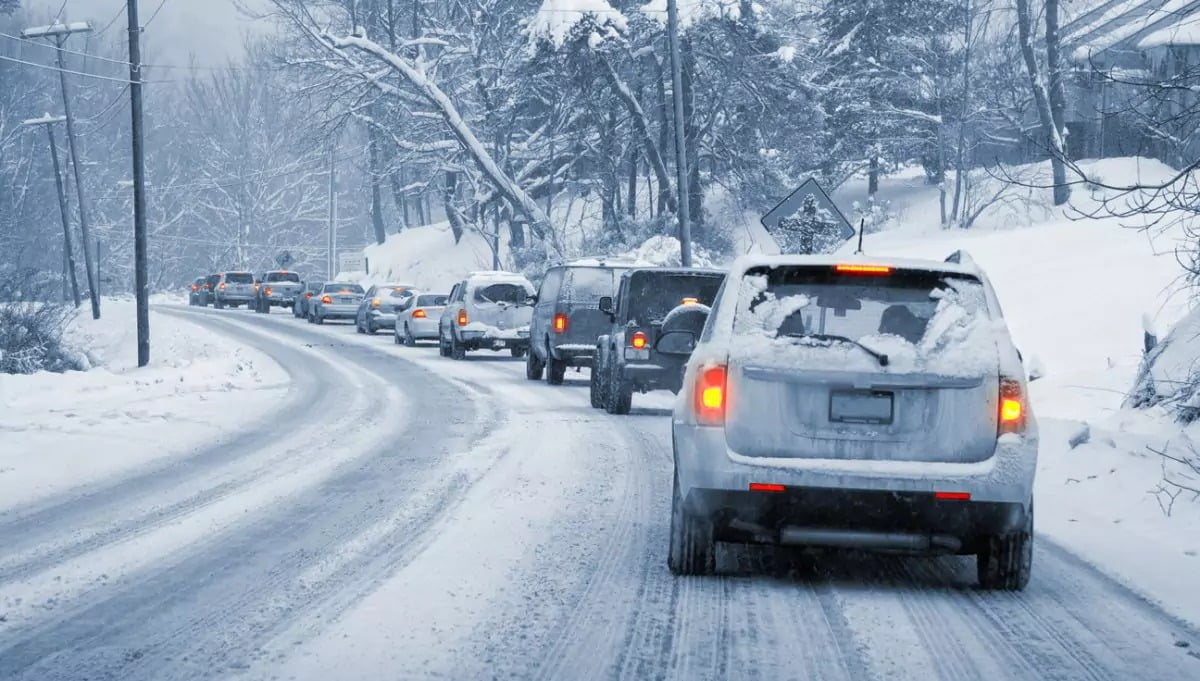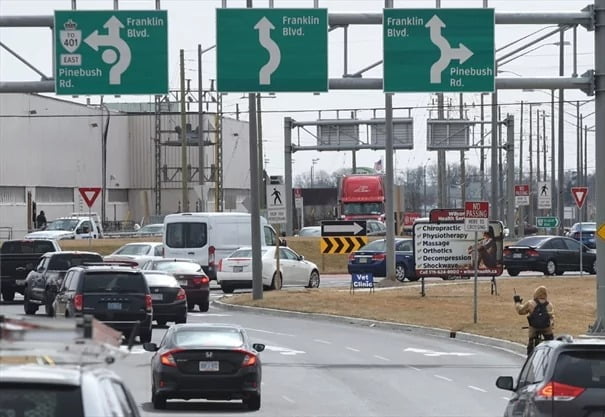Winter officially begins on December 21 but Mother Nature has already brought its familiar friends of road closures, ice slicks, and blinding flurries. Driving in the winter is never fun, but there are steps you can take to make it a lot less dangerous for you and your family. Keep these tips in mind as you travel this snowy season and keep yourself as safe as possible on the road.
Be ready for the season
Winter driving safety begins before you even leave the lane way. The first thing is to make sure you have a good set of winter tires on your vehicle. All Season tires simply don’t provide the grip and responsiveness you need to reliably stop or make sudden moves without losing control. A quality set of winter tires is probably the single largest preventative step you can take so make it your top priority.
It is also a good idea to stock your vehicle with an emergency roadside kit. A few simple basics such as a blanket, gloves, a snack, a flashlight and some hazard pylons/reflectors can prevent a breakdown or sudden traffic stop from becoming a seriously threatening emergency. There are a number of fine roadside kits you can purchase, but they are also easy to make yourself.
Make sure to have your roadside assistance coverage up to date. This will save you money and hassle in the event of a major snow storm that leaves you stranded (you don’t want to be hiring a tow at peak rates during the worst snow storm of the year!).
Plan ahead
Keep an eye on the weather report in the morning and know what you’re getting into before you leave the house. Know how bundled up you should be and if there are any road closures or accidents that are going to impact your route.
If possible, plan out multiple routes to your typical destinations. This is especially important if you commute and take the highway (you absolutely do not want to be stuck on the highway during a traffic pile up) or encounter a lot of steep hills on your usual route. It is absolutely worth going a few minutes out of your way to avoid a steep hill after a bout of freezing rain or serious snowfall.
And on really dangerous days, ask yourself if you really need to go out. Sometimes it is unavoidable, you have to go to work, or the kids went to school in the morning when it was fine and now you have to face a blizzard to go pick them up and there is just no choice in the matter. Other times you have to ask yourself if you really need to get that errand done today, or if you can’t reschedule an appointment or date for a day when you’re not taking your life in your hands going outside.
STAEBLER SUGGESTION: Before heading out, we recommend looking at Ontario 511 for current road conditions in your area.
Exercise caution
We should always be careful drivers, but in the winter it is more important than ever. You’ll want to slow down and be more deliberate in your driving. Give yourself extra space between cars and try to plan lane changes early so you don’t need to risk coming into a crowded lane in slippery conditions. In particular, keep an eye out for snow plows, these large vehicles often have large blind spots and the drivers are pre-occupied with what is in front of them, making them statistically more likely to be involved in accidents. Give them a wide berth.
Adjust your habits to accelerate and decelerate over a longer period of time. This will help avoid tire spins and sliding past stop signs. It’s extra important to be mindful of your inertia during the winter and slowing and stopping becomes more laborious, if you see a red light ahead, try to slow down early and see if giving it a few extra seconds will allow it to turn green before you need to come to a complete stop. This is also something to keep in mind on hills, you never want to try and “power through” a hill by revving up your engine, this will just make you spin out and slide all over. Instead, you want to hit a hill with a good amount of inertia that will help take you up smoothly and safely (be ready to slow down once you reach the top, especially if the road curves back downhill).
And finally, keep your gas tank filled. Cold engines consume more gas and with the possibility of getting stuck in a snowbank or traffic snarl up, it’s a good idea to keep your engine above the halfway point at all times.











0 Comments